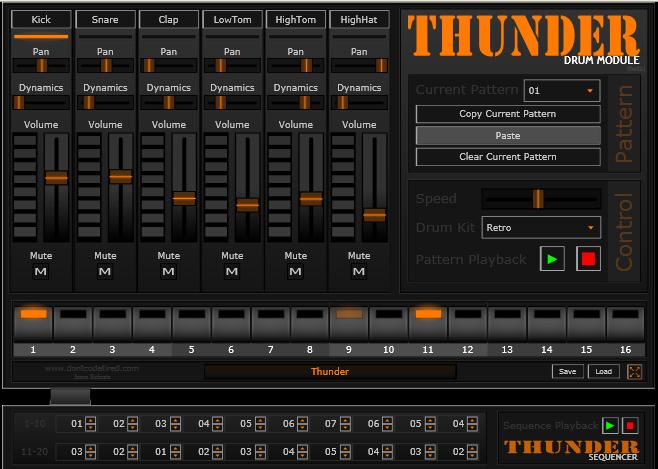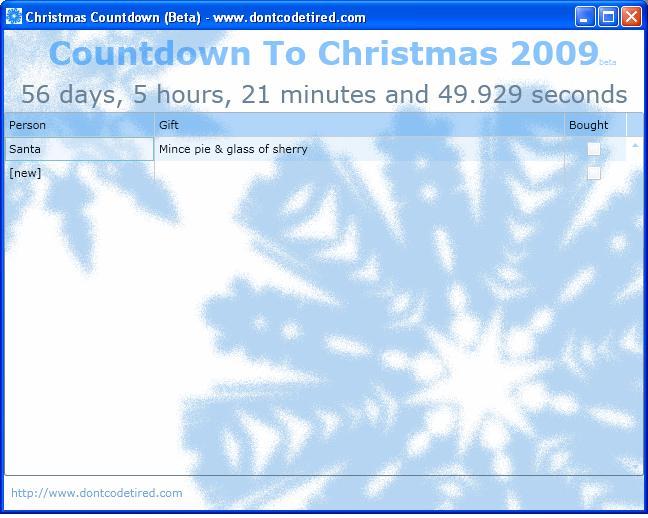One problem with the Silverlight DataContractSerializer is that it does not maintain reference links to objects. For example: if you had a customer object "Mr Green" and 2 order objects "Cooker" & "Fire" that both held references to the (single) "Mr Green", when serialised and then deserialised using DataContractSerializer the "Cooker" would point to a different "Mr Green" than the "Fire", i.e. they are not reference equal. If this is an undesirable scenario we can choose to serialise in a binary, reference-equal way so that when we deserialise there will still only be 'one' "Mr Green".
One option is to make use of a 3rd party library such as CSLA Light. You can use CSLA Light just to enable binary serialization or you could embrace the whole CSLA architecture. Either way you will probably need to change the inheritance structure of your objects and replace any properties with CSLA properties. You can find out more about CSLA Light at http://www.lhotka.net/weblog/UsingCSLALightPart1.aspx
Example of simple CSLA
For our Customer objects to be CSLA binary serializable we would modify the class to look something like:
[Serializable]
public class Customer : BusinessBase<Customer>
{
private static PropertyInfo<string> CustomerNameProperty = RegisterProperty<string>(new PropertyInfo<string>("CustomerName", "CustomerName", string.Empty));
public string CustomerName
{
get
{
return GetProperty(CustomerNameProperty);
}
set
{
SetProperty(CustomerNameProperty, value);
}
}
We would follow a similar pattern for out order class. We could then use CSLA's MobileFormatter to serialise/deserialise (the example below defines generic methods but non-generic/typed methods could also be used):
public static T Load<T>(Stream stream)
{
T m = default(T);
Csla.Serialization.Mobile.MobileFormatter f = new Csla.Serialization.Mobile.MobileFormatter();
m = (T) f.Deserialize(stream);
return m;
}
public static void Save<T>(T obj, Stream stream)
{
Csla.Serialization.Mobile.MobileFormatter m = new Csla.Serialization.Mobile.MobileFormatter();
m.Serialize(stream, obj);
}
There are alternatives to CSLA Light for getting binary serialisation such as http://slserializelzo.codeplex.com/ although I've not investigated them as yet. (Hopefully a future version of Silverlight will allow the DataContractSerializer to output XML (albeit 'non standard') with referential links.
SHARE:
Obviously you know when a users clicks your full screen button but a the user can press escape to exit full screen mode at any time, an alternative is to respond to the FullScreenChanged event.
For example:
public partial class MainPage : UserControl
{
public MainPage()
{
InitializeComponent();
App.Current.Host.Content.FullScreenChanged += new EventHandler(FullScreenChanged);
}
void FullScreenChanged(object sender, EventArgs e)
{
if (App.Current.Host.Content.IsFullScreen)
txtFullScreen.Text = "Running in full screen.";
else
txtFullScreen.Text = "Not running in full screen.";
}
private void btnFullScreen_Click(object sender, RoutedEventArgs e)
{
App.Current.Host.Content.IsFullScreen = true;
}
}
The above assumes a button to enable the user to select full screen and a textblock:
<UserControl x:Class="blog_misc_temp.MainPage"
xmlns="http://schemas.microsoft.com/winfx/2006/xaml/presentation"
xmlns:x="http://schemas.microsoft.com/winfx/2006/xaml"
xmlns:d="http://schemas.microsoft.com/expression/blend/2008" xmlns:mc="http://schemas.openxmlformats.org/markup-compatibility/2006"
mc:Ignorable="d" d:DesignWidth="640" d:DesignHeight="480">
<Grid x:Name="LayoutRoot">
<StackPanel>
<TextBlock Name="txtFullScreen" Text="Not running in full screen."/>
<Button Click="btnFullScreen_Click" Content="Enter Full Screen"></Button>
</StackPanel>
</Grid>
</UserControl>
SHARE:
I've been working on a Silverlight 3 drum machine/sequencer called Thunder, the first (beta) version is now available at:
http://www.dontcodetired.com/live/thunder/

It's a fully working version but the code base requires some re-factoring. Playback smoothness varies depending on the machine specs and how many instruments are playing at the same time.
Future improvements include the addition of more than 2 drum kits, the ability to use your own drum samples and attempting to improve the performance (although this seems to be limited by having to use a MediaElement to play a stream rather than an immediate .Play() method - hopefully in Silverlight 4 a lower latency sound playback mechanism will be introduced).
SHARE:
In code behind for WPF/Silverlight in Visual Studio you can use the key combination snippet (assuming defaults) ctrl-k then x then NetFX30 then either choose either a DependencyProperty or attached DependencyProperty.

SHARE:
For a bit of Silverlight 3 fun:

Use\install at: http://www.dontcodetired.com/live/christmascountdownbeta/
There are some things which need improving such as resizing when run out of browser, abilty to sort/hide/filter data etc.
SHARE:
Rather than taking an array of Color objects, the WritableBitmap.Pixels property holds an array on ints which represent premultiplied ARGB colour values. To set a given pixel to a given colour you have to take the alpha, red, green and blue values and convert them to a premultiplied ARGB int value.
The following code contains some helpers/extension methods to make the process bit easier, for example to set every pixel to red:
for (int index = 0; index < bmp.Pixels.Length; index++)
{
Color myColour = new Color() { A = 255, R = 255, G = 0, B = 0 };
bmp.Pixels[index] = myColour.ToWritableBitmapPixelValue();
}
or using the Fill extension method:
bmp.Fill( new Color() { A = 255, R = 255, G = 0, B = 0 } );
WritableBitmapHelper class listing
using System;
using System.Net;
using System.Windows;
using System.Windows.Controls;
using System.Windows.Documents;
using System.Windows.Ink;
using System.Windows.Input;
using System.Windows.Media;
using System.Windows.Media.Animation;
using System.Windows.Shapes;
using System.Windows.Media.Imaging;
namespace BitmapAPI
{
/// <summary>
/// Helper methods\extension methods for dealing with WritableBitmap,
/// in real world implementation you'd probably choose to separate the
/// extension methods iinto separate static classes;
/// eg WritableBitmapExtensions & ColorExtensions
/// </summary>
public static class WritableBitmapHelper
{
/// <summary>
/// Converts ARGB byte values to an integer
/// Based on info found at:
/// http://blogs.silverarcade.com/silverlight-games-101/15/silverlight-writeablebitmap-pixel-format-in-silverlight-3/
/// </summary>
/// <param name="alpha">Alpha transparency: 0=transparent 255=solid</param>
/// <param name="red">Amount of red: 0 to 255</param>
/// <param name="green">Amount of green: 0 to 255</param>
/// <param name="blue">Amount of blue: 0 to 255</param>
/// <returns>An integer representing an ARGB color</returns>
public static int CalcWritableBitmapPixelValue(byte alpha, byte red, byte green, byte blue)
{
// Calc premultiplier once only. We need to use premultiplied ARGB32
// rather than convential ARGB.
double alphaPreMultiplier = alpha / 255d;
// Premultiply rgb values with alpha
byte r = (byte)(red * alphaPreMultiplier);
byte g = (byte)(green * alphaPreMultiplier);
byte b = (byte)(blue * alphaPreMultiplier);
return (alpha << 24) | (r << 16) | (g << 8) | b;
}
/// <summary>
/// Extension method to convert a System.Windows.Media.Color to an integer value.
/// </summary>
/// <param name="color">The System.Windows.Media.Color to convert</param>
/// <returns>An integer representing the ARGB values of <paramref name="color"/></returns>
public static int ToWritableBitmapPixelValue(this Color color)
{
return CalcWritableBitmapPixelValue(color.A, color.R, color.G, color.B);
}
/// <summary>
/// Extension method to 'fill' a WriteableBitmap with a given solid color
/// </summary>
/// <param name="bmp">The WriteableBitmap to fill</param>
/// <param name="color">The Color to fill with</param>
public static void Fill(this WriteableBitmap bmp, Color color)
{
for (int i = 0; i < bmp.Pixels.Length; i++)
{
bmp.Pixels[i] = color.ToWritableBitmapPixelValue();
}
}
}
}
SHARE:
While SL3 doesn't add full 3D support, you can now transform elements in a 3D fashion.
The following videos are recommended (and form the basis of this example) but I've used simple opacity rather than transforming an element off the screen:
http://silverlight.net/learn/learnvideo.aspx?video=187308
http://silverlight.net/learn/learnvideo.aspx?video=189248
The new PlaneProject allow you to 'skew' an element in X, Y and Z dimensions. UI elements now have a Projection property which can contain a PlaneProjection:
<Grid.Projection>
<PlaneProjection x:Name="HeadsGridProjection" RotationX="0" RotationY="0" RotationZ="0"></PlaneProjection>
</Grid.Projection>
The example below uses 2 grids containing a circle (the coin face) and text "Heads" or "Tails". There are 2 storyboards, the 1st rotates the heads to tails, the 2nd animation tails to heads. The storyboards call each other wheneach one finishes using the Completed event of the storyboard.
The code behind looks like this:
using System;
using System.Collections.Generic;
using System.Linq;
using System.Net;
using System.Windows;
using System.Windows.Controls;
using System.Windows.Documents;
using System.Windows.Input;
using System.Windows.Media;
using System.Windows.Media.Animation;
using System.Windows.Shapes;
namespace _3DCoinFlip
{
public partial class MainPage : UserControl
{
public MainPage()
{
InitializeComponent();
}
private void UserControl_Loaded(object sender, RoutedEventArgs e)
{
// Automatically start the 1st storyboard when the page loads
FlipToTails.Begin();
}
private void FlipToTails_Completed(object sender, EventArgs e)
{
// When the head-->tails animation completes, start the tails-->heads animation
FlipToHeads.Begin();
}
private void FlipToHeads_Completed(object sender, EventArgs e)
{
// When the tails-->heads animation completes, start the head-->tails animation
FlipToTails.Begin();
}
}
}
And the XAML:
<UserControl x:Class="_3DCoinFlip.MainPage"
xmlns="http://schemas.microsoft.com/winfx/2006/xaml/presentation"
xmlns:x="http://schemas.microsoft.com/winfx/2006/xaml"
xmlns:d="http://schemas.microsoft.com/expression/blend/2008" xmlns:mc="http://schemas.openxmlformats.org/markup-compatibility/2006"
mc:Ignorable="d" d:DesignWidth="640" d:DesignHeight="480"
Loaded="UserControl_Loaded" >
<UserControl.Resources>
<Style TargetType="Grid" x:Key="CoinFace">
<Setter Property="Width" Value="200"/>
<Setter Property="Height" Value="200"/>
</Style>
<Style TargetType="TextBlock" x:Key="CoinText">
<Setter Property="VerticalAlignment" Value="Center"/>
<Setter Property="HorizontalAlignment" Value="Center"/>
<Setter Property="FontSize" Value="48"/>
</Style>
<Storyboard x:Name="FlipToTails" Completed="FlipToTails_Completed" >
<!-- heads side -->
<DoubleAnimationUsingKeyFrames BeginTime="00:00:00"
Storyboard.TargetName="HeadsGridProjection"
Storyboard.TargetProperty="RotationY">
<SplineDoubleKeyFrame KeyTime="00:00:00" Value="0"/>
<SplineDoubleKeyFrame KeyTime="00:00:01" Value="90"/>
</DoubleAnimationUsingKeyFrames>
<!-- Tails Side -->
<DoubleAnimationUsingKeyFrames BeginTime="00:00:00"
Storyboard.TargetName="TailsGridProjection"
Storyboard.TargetProperty="RotationY">
<SplineDoubleKeyFrame KeyTime="00:00:01" Value="270"/>
<SplineDoubleKeyFrame KeyTime="00:00:02" Value="360"/>
</DoubleAnimationUsingKeyFrames>
<DoubleAnimationUsingKeyFrames BeginTime="00:00:00"
Storyboard.TargetName="Tails"
Storyboard.TargetProperty="Opacity">
<SplineDoubleKeyFrame KeyTime="00:00:00" Value="0"/>
<SplineDoubleKeyFrame KeyTime="00:00:01" Value="0"/>
<SplineDoubleKeyFrame KeyTime="00:00:01.01" Value="1"/>
</DoubleAnimationUsingKeyFrames>
</Storyboard>
<Storyboard x:Name="FlipToHeads" Completed="FlipToHeads_Completed">
<!-- tails side -->
<DoubleAnimationUsingKeyFrames BeginTime="00:00:00"
Storyboard.TargetName="TailsGridProjection"
Storyboard.TargetProperty="RotationY">
<SplineDoubleKeyFrame KeyTime="00:00:00" Value="0"/>
<SplineDoubleKeyFrame KeyTime="00:00:01" Value="90"/>
</DoubleAnimationUsingKeyFrames>
<!-- heads Side -->
<DoubleAnimationUsingKeyFrames BeginTime="00:00:00"
Storyboard.TargetName="HeadsGridProjection"
Storyboard.TargetProperty="RotationY">
<SplineDoubleKeyFrame KeyTime="00:00:01" Value="270"/>
<SplineDoubleKeyFrame KeyTime="00:00:02" Value="360"/>
</DoubleAnimationUsingKeyFrames>
<DoubleAnimationUsingKeyFrames BeginTime="00:00:00"
Storyboard.TargetName="Heads"
Storyboard.TargetProperty="Opacity">
<SplineDoubleKeyFrame KeyTime="00:00:00" Value="0"/>
<SplineDoubleKeyFrame KeyTime="00:00:01" Value="0"/>
<SplineDoubleKeyFrame KeyTime="00:00:01.01" Value="1"/>
</DoubleAnimationUsingKeyFrames>
</Storyboard>
</UserControl.Resources>
<Grid x:Name="LayoutRoot">
<StackPanel>
<Grid>
<Grid Name="Heads" Style="{StaticResource CoinFace}">
<Grid.Projection>
<PlaneProjection x:Name="HeadsGridProjection" RotationX="0" RotationY="0" RotationZ="0"></PlaneProjection>
</Grid.Projection>
<Ellipse Stretch="Fill" Fill="Silver"/>
<TextBlock Style="{StaticResource CoinText}">Heads</TextBlock>
</Grid>
<Grid Name="Tails" Style="{StaticResource CoinFace}" Opacity="0">
<Grid.Projection>
<PlaneProjection x:Name="TailsGridProjection" RotationX="0" RotationY="0" RotationZ="0"></PlaneProjection>
</Grid.Projection>
<Ellipse Stretch="Fill" Fill="Gold"/>
<TextBlock Style="{StaticResource CoinText}">Tails</TextBlock>
</Grid>
</Grid>
</StackPanel>
</Grid>
</UserControl>
SHARE:
One of the new SL3 features is the ability to test if there is a network connection currently active. This complements the out of browser experience by letting an app use local (isolated) storage when off-line, and when a network connection becomes available, upload data to a central server.
To be informed when the network changes:
System.Net.NetworkInformation.NetworkChange.NetworkAddressChanged += (sender, e) => txtNetStatus.Text = "Network available: " + System.Net.NetworkInformation.NetworkInterface.GetIsNetworkAvailable().ToString();
This example uses a lambda expression as a shortcut (rather than having a separate method); when the network status changes, we set the text of txtNetStatus to 'Network available: True' or 'Network available: False' depedning on the (boolean) result of GetIsNetworkAvailable().
SHARE: